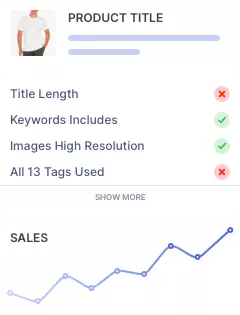Comprehensive Analysis of Horizontal and Vertical Approaches
People’s definition of eCommerce is often limited to “selling online.” Not knowing the different variants that are present, they try to do everything to make their product prevalent in the virtual domain. However, their haphazard efforts often don’t yield results since they need to know they are playing with either one or both eCommerce techniques – horizontal and vertical eCommerce.

Understanding the meaning of the two will help you understand the marketing strategy you’ve been implementing, and picking between the two will allow you to choose the best one for your business. So, let us dive into this guide where we deconstruct the meaning and the pros and cons of both forms of eCommerce to help you redefine your online business in the way that you originally intended – an entity that can gain success in the long term.
What is Horizontal eCommerce?
Horizontal eCommerce is when you’re trying to sell everything to everyone. They are your online retail stores, Amazon and Flipkart, and Snapdeals. Comprehensive marketing strategy is their purpose, and bringing every product under one roof is their goal.
Simply put, Horizontal eCommerce is a shopping mall – online or otherwise – that sells everything. For small-scale businesses and start-ups, Horizontal eCommerce can be for those who want to be generous regarding the type of clients they entertain to maximize profits. As you can imagine, it takes a diverse marketing approach, with multiple elements meant to work together coherently while performing well independently. The reach of platforms with horizontal eCommerce integration is broad, but such diversity has perks and cons that one needs to be aware of. What are the benefits and drawbacks of horizontal e-commerce, then? Well, let’s take a look together.
Pros of Horizontal eCommerce
If you’re willing to dive into more sophisticated marketing strategies and are bold in entertaining all types of clients, there are many perks to be had by picking horizontal commerce.
- Saving money
You can share a single resource for multiple niches in horizontal marketing. For instance, if you decide to start an online store for all the retailers in your area, one platform may have sufficient resources to serve all. The lack of operating costs often translates to more profits.
- Enhance Your Profits
Implement multiple marketing strategies and pricing models for different products with horizontal products. Unbound by the prospect of catering to a single type of customer, you can take a subtle – and more affordable approach – that can often yield better results.
- High level of customer engagement
Horizontal eCommerce caters to one type of customer seeking to buy your products. You aren’t concerned with demographics as much since your online platform lets your prospects have a simple expectation: access to your services. The onus of engagement with horizontal eCommerce falls on something other than the digital portal but on the active marketers and retailers. These marketers come into play, creating a more engaging ecosystem within the platform.
- Scaling and acquiring outstanding market share
With a Horizontal eCommerce platform, you’re creating a digital marketplace to acquire the maximum number of retailers that offer diverse products. That could be a system where customers won’t need to go anywhere else as they might find products in one place.
Cons of Horizontal eCommerce
The perks of diversifying services and leaving the onus of marketing on retailers create an automated system. Still, there is a trade-off: control, costs, and quality of products. Here are the disadvantages you might look at if you choose to go with Horizontal marketing.
- Acquiring customers is pricey
When your customers are niche, your marketing efforts focus on one goal. But when they are diversified, you’re looking at a varied marketing technique with innate complexities that can drive up marketing costs.
- Lack of closer interaction
The high level of engagement we claimed as one of the perks only sometimes works. Since a horizontal business must focus on everyone in the same light and give them the same consideration, there is a trade-off regarding interaction. You might need help to interact with all your customers similarly. However, retailers onboarded on the digital marketplace will be responsible for engaging with the customer, even if they have difficulty doing so.
What is Vertical eCommerce?
Vertical eCommerce takes a top-down approach to cater to a single niche. The goal of a vertical business is to dominate one industry and provide the best service or product of one particular kind. With its target-bound approach, Vertical eCommerce is eCommerce “specialized,” where your goal is to ensure that your business can fully cater to the needs of a single type of customer. While it has limitations, it also has perks.
Pros of Vertical eCommerce
With vertical eCommerce, your goal is to cater to customers, develop relationships, and foster loyalty. Here are the key perks you will enjoy when implementing a vertical eCommerce model.
- Direct specialized feedback to improve your products
When taking a vertical approach to eCommerce, you pay special attention to your customers and emphasize what they say. That gives you a direct line of their feedback. You can use those reviews to evolve the product or service you deliver.
For instance, Etsy, a marketplace for independent artists, is a place where you can use integration like Roketfy AI reviews to turn customer feedback into valuable insight to become better.
- Offering a more direct way of marketing
It is easier to sell to one person than to sell to everyone. With vertical eCommerce that caters to a particular niche, you can pick your demographic beforehand and create products around it that can elicit responses from your ideal customers. This direct approach is more flexible and allows you to be more creative within your domain. For instance, you can use an AI writer to create a targeted product description to market your products on Etsy.
- Getting a leading jump-off point
Vertical eCommerce marketplaces will allow you to have a specialized beginning. These niche-specific marketplaces remove many unknowns regarding customers and marketing, giving such sites more credibility. Posting on such sites will give your product a credible appearance, gravitating customers towards your products.
Cons of Vertical eCommerce
Some challenges come with vertical eCommerce sites, and here are they:
- Need to keep up with the trends
While picking one niche unburdens you from taking care of multiple unknowns, it can also make you blind to specific market trends. Unable to keep up with them will push your business to the sidelines. Thankfully, products related to product research for such vertical eCommerce sites let you piggyback on what’s trending.
- Growth in a saturated market
A niche-specific marketplace is familiar with saturation. Thus, to separate your business from the pack, you need to find your USP within your niche, a task challenging if you know how to analyze your competitors. Thankfully, tools in the market, like Roketfy’s competitor analysis, make it easier.
Horizontal vs. Vertical eCommerce – Which one to choose?
Your business goals will determine the type of eCommerce route you take. If you desire to generate more profits and have no qualms about beginning from the ground up, you may look in detail at horizontal eCommerce.
But if you are willing to take on the challenges within your niche and engage with costumes more meaningfully while fostering and developing relationships with them, you may prefer vertical eCommerce. Should you choose smartly and professionally between the two, you can benefit our profession along with Roketfy’s specialized solutions and technologies. That will ensure your demands are met promptly and save you the time and money to attempt both.
Want to make your experience with vertical e-commerce more streamlined? Check out Roketfy, a virtual assistant to help you boost your sales on Etsy. Join today to unlock your product’s potential.




